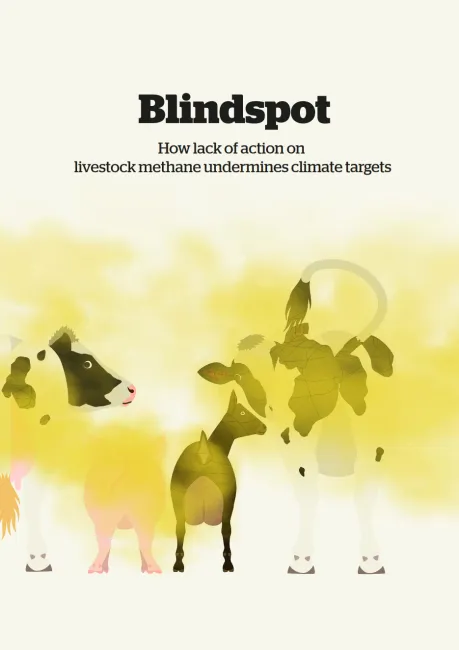This report from Dutch NGO the Changing Markets Foundation argues that a lack of attention to reducing methane emissions puts the world at greater risk of reaching climate tipping points. It analyses the climate commitments of the 18 countries with the biggest meat and dairy industries, as well as the largest meat and dairy companies worldwide, and finds that neither governments nor corporations are taking sufficient action on cutting methane emissions.

The findings of the report include:
- Livestock methane emissions are stable or increasing in most countries. Of the 18 countries studied, eight had reduced livestock methane emissions in the last five years; the greatest percentage decrease was just 3.1% (Australia).
- None of the countries studied had overall methane emissions targets consistent with a 45% reduction by 2030 - a reduction consistent with keeping climate change below 1.5°C (the 45% figure is from the 2021 UNEP report Global Methane Assessment: Benefits and Costs of Mitigating Methane Emissions).
- Most countries studied lack substantial plans for reforming their food and agriculture sectors.
- None of the 20 meat and dairy companies studied report their methane emissions separately to other greenhouse gas emissions, and none have specific targets for cutting their methane emissions.
- Only seven of the companies have set overall greenhouse gas emissions targets consistent with the Paris climate agreement.
- Only three of the companies include Scope 3 emissions in their climate targets - for examples emissions from farms that supply the company with meat or dairy.
- 18 of the 20 companies have made some investments in lab-grown or plant-based meat alternatives. Only Danone reports sales of its combined portfolio of alternatives.
- Just over half of the companies are investing in methane abatement research, but none publishes the quantity of such funding.
The report concludes that livestock, as the largest contributor to human-induced methane emissions, should be central to plans to reduce methane emissions. It proposes a legally binding framework to tackle both supply and demand, including promoting a reduction in meat and dairy consumption in countries with average consumption above recommended levels, and requiring companies to set science-based carbon and methane emissions.
Read the full report, Blindspot: How lack of action on livestock methane undermines climate targets, here (PDF link). See also the TABLE explainers Agricultural methane and its role as a greenhouse gas and Methane and the sustainability of ruminant livestock.




Comments (0)